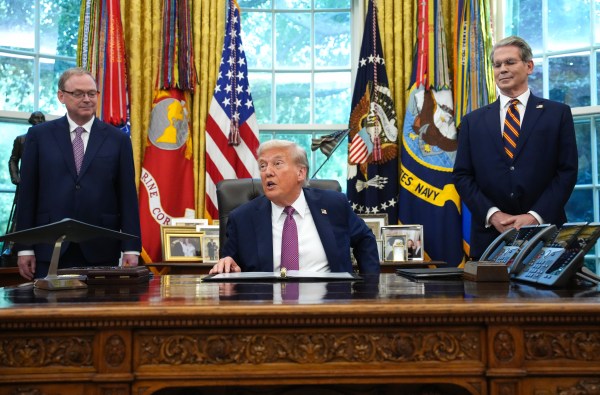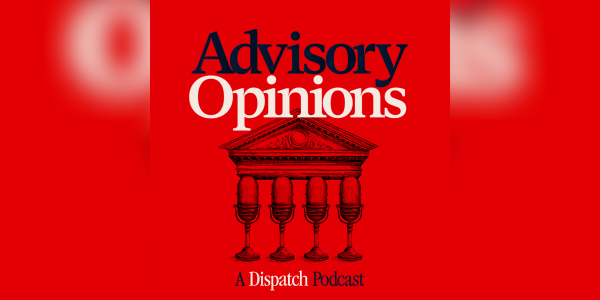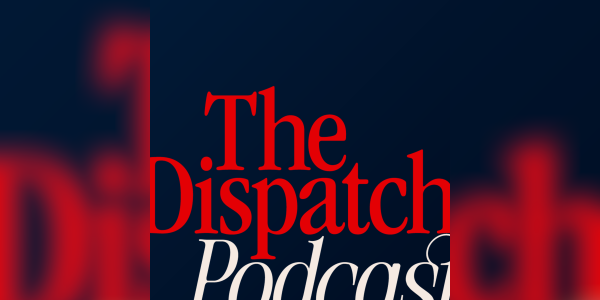Two explosions boomed overhead in Saudia Arabia’s capital of Riyadh in recent days, as the city came under cross-border missile and drone attacks of unknown origins. On Saturday, the Saudi-led coalition claimed to have intercepted a “hostile air target” attributed to Yemen’s Houthis; On Tuesday, videos and pictures of Saudi Arabia’s missile defense system destroying an object midair circulated on social media.
Astute observers anticipated the collisions before they happened, having tracked flight diversions from the capital city and speculated about their purpose. Others—even those who heard the blasts firsthand—didn’t discover their source until much later. Although the U.S. Embassy released a statement informing Americans of the first thwarted strike and warning that they “stay alert in case of additional future attacks,” Saudi officials refrained from actively publicizing the attacks.
“I was home when the drone was intercepted Saturday morning. I heard a very loud double ‘Boom!’, one almost on top of the other. It was so loud I had one of those, ‘What the heck?’ moments,” Robert Godley, an American expat living in Riyadh, told The Dispatch. “I really had no idea what it was, but I am near a major city artery, so I thought it might be a car crash, though it didn't really sound like one. I didn't know it was a drone strike when a good friend and colleague showed me the video his brother had taken of the intercept.”
Since its 2015 intervention into Yemen on behalf of President Abdrabbuh Mansour Hadi, Saudi Arabia has been the target of a five-year torrent of rocket and drone fire at the hands of the Houthi rebels—officially called Ansar Allah—who control much of the country. But there’s reason to doubt the group’s involvement in the two most recent attacks, despite Saudi reports and the U.S. State Department’s implicit attribution in a recent statement promising to resolve the Yemen war.
Ansar Allah has publicly denied involvement, despite a long history of taking credit for its strikes—and even other entities’ strikes—on Saudi Arabia. In May 2019, the Houthis claimed to have dispatched seven drones that hit two Saudi oil pumping stations. U.S. intelligence later identified the culprit as an Iran-backed militia in Iraq. In September 2019, the group took responsibility for the drone and cruise missile hits on the Abqaiq and Khurais oil facilities. They actually originated in Iran.
Another group—a newly formed Iran-backed militia in Iraq called Alwiya Alwaad Alhaq—released a statement claiming that they had carried out Saturday’s attack in retaliation for ISIS’s attack on Baghdad that killed 34.
Regardless of their origins, one thing about these foiled strikes is clear: They very likely involved a high degree of Iranian funding, training, and technology. Just days into the Biden presidency, the Islamic Republic is testing the boundaries of a new American regime.
“Different parties in the region want to stress to President Biden that their particular case file is the most important file to be dealt with,” said Alex Vatanka, head of the Middle East Institute’s Iran program.
If Ansar Allah, which is also backed by Iran, is actually responsible, Vatanka explained, it’s likely an effort to compel the Biden administration to up the pressure on the Saudis to withdraw from Yemen. “They’re basically saying: ‘Saudi Arabia will not be safe until it ceases its military operations,’” he said.
In the days between the Saturday and Tuesday attacks, Biden froze sanctions against the Houthis for one month to reconsider its controversial designation as an “foreign terrorist organization” by former Secretary of State Mike Pompeo in the final days of Trump’s presidency. The move was aimed at temporarily mitigating the ongoing humanitarian crisis in Yemen, but experts have warned that reupping aid will serve only to empower the group’s malign activities.
“It is not possible for Ansar Allah to appease the population they are oppressing without the help of the international community,” said Kirsten Fontenrose, the Atlantic Council’s director of the Scowcroft Middle East Security Initiative. “If the international community once again treats Ansar Allah like a victim instead of a responsible actor, then the Houthis will get the message that they can continue for four more years to manipulate humanitarian aid as a method for controlling a population that does not support them.”
Saudi Arabia entered the Yemen civil war in 2015 amid concerns about the rebel group’s apparent ties to Iran and fear of insurrectionists on its southern border. In the years since, the conflict has escalated into one of the most devastating humanitarian crises worldwide. The Islamic Republic and Saudi Arabia have battled it out indirectly in Yemen, using the country as a testing ground for emerging weaponry.
“It’s been the single greatest number of missile defense engagements, as well as an extremely significant number of air and missile attacks, UAVs, cruise missiles, and other various kinds,” Tom Karako, director of the Missile Defense Project at the Center for Strategic and International Studies, told The Dispatch. “The Iranians have been using the Yemen conflict as a place to try out a lot of weapons over the past several years. In that respect, the two drone or missile attacks are part of a much larger phenomenon.”
Given the geographical distance between Yemen’s border and Riyadh—more than 400 miles—the Houthis have taken to attacking Saudi infrastructure elsewhere in the country. But striking the heart of the kingdom is not impossible, particularly given the influx of Iranian ballistic missiles to Yemen. In June 2020, the rebel group deployed eight armed drones and several ballistic missiles to Riyadh, Najran, and Jazan. Earlier that year, the Royal Saudi Air Defense Forces intercepted two ballistic missiles over the capital city. During 2017, four different ballistic missile attacks out of Yemen shook Riyadh.
“Iranian support has enabled the Houthi movement to field a diverse arsenal of ballistic missiles, cruise missiles, and drones despite the Houthis’ lack of either a stable political base or significant industrial capacity,” said a 2020 report on the missile exchanges by the Center for Strategic and International Studies. “The Houthis have used missile and drone attacks as part of a strategy to raise the military, economic, and political costs of the Arab coalition’s intervention.”
A large part of Ansar Allah’s strategy is not to make military strides against the kingdom, but to make its growing economy appear as an unsound investment. “If you’re trying to promote your economy—and if you’re trying to draw business out of Dubai to make Riyadh into the new investor capital of the Gulf states—you need to be able to tell the international community that you’re a safe place,” Vatanka told The Dispatch. “And if you have missiles hitting your capital and hitting strategic assets, like refineries, that sends the opposite message.”
While the economic impacts of rocket fire are tangible, the Iraq-based militia—if responsible for one or both of the attacks—appears to be driven by different motivations altogether. In a statement that appeared in Sabereen News, an Iraqi insurgent source, Alwiya Alwaad Alhaq—the “righteous promise brigades”—touted the attack as an act of retaliation.
“The Iraqi Resistance group is openly targeting Saudi Arabia after the terrorist attacks in Baghdad which left 34 martyrs. The attacks were claimed by Saudi-backed ISIS. Saudi Arabia is the new playground of missiles and drone attacks. MBS should sleep with one open eye from now on. From south and north, Saudi Arabia will become the target of resistance movement,” the group said, falsely linking Saudi Arabia to acts of terror by ISIS.
Although it’s unclear where the new militia is situated within Iraq, the distance from the southern border of Iraq to Riyadh is only about 300 miles. And Al-Qabas, Kuwait’s newspaper, released a report last month confirming the deployment of precision-guided missiles and drones to south Iraq along with two units of officers.
“I think that this follows an emerging pattern of Iraq-based militias targeting Saudi Arabia. We saw this most clearly in May 2019 when there was an attack on a Saudi oil pipeline. Initially, everyone thought it was the Houthis, but the U.S. later concluded that it came from Iraq,” Jason Brodsky, policy director at United Against Nuclear Iran, told The Dispatch. “You see Iraq becoming a very important theater for Iran to use to project its power and carry out its malign interference around the region.”
Immediately following the two recent attacks on Riyadh, the Biden administration reportedly opted to temporarily halt arms sales to Saudi Arabia and ally UAE yesterday. Ramped up Iranian aggression following decisive shifts in American leadership sends a clear message to the State Department: resume diplomatic negotiations toward a renewed nuclear deal or tolerate sustained low level regional conflict. But even if the U.S. opts for the former, it remains unlikely that Iran will abate its proxy warfare.
“It’s important for the Biden administration to focus on the regional aspect in the coming months, because it’s not going away. There is a huge risk that any sanctions relief given to Iran will be diverted to doubling down its malign activities in the region,” Brodsky said. “We saw it when the nuclear deal was inked in 2015—afterward, it fueled its proxy wars in the region. Making sure that there’s a coherent strategy at how the nuclear file fits into the regional picture is critical.”







Please note that we at The Dispatch hold ourselves, our work, and our commenters to a higher standard than other places on the internet. We welcome comments that foster genuine debate or discussion—including comments critical of us or our work—but responses that include ad hominem attacks on fellow Dispatch members or are intended to stoke fear and anger may be moderated.
With your membership, you only have the ability to comment on The Morning Dispatch articles. Consider upgrading to join the conversation everywhere.